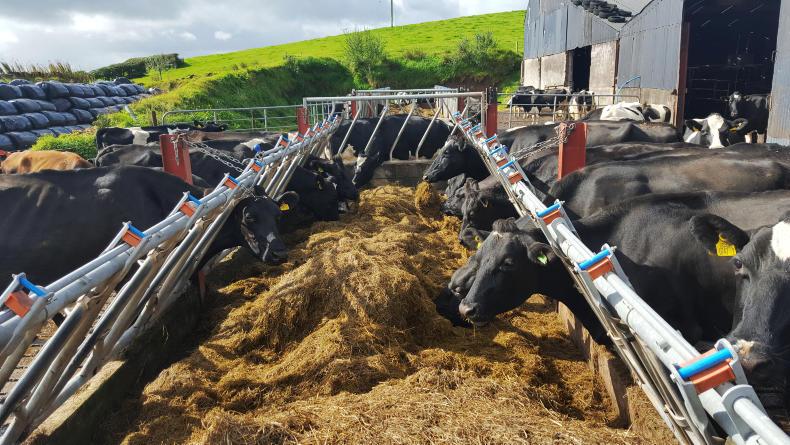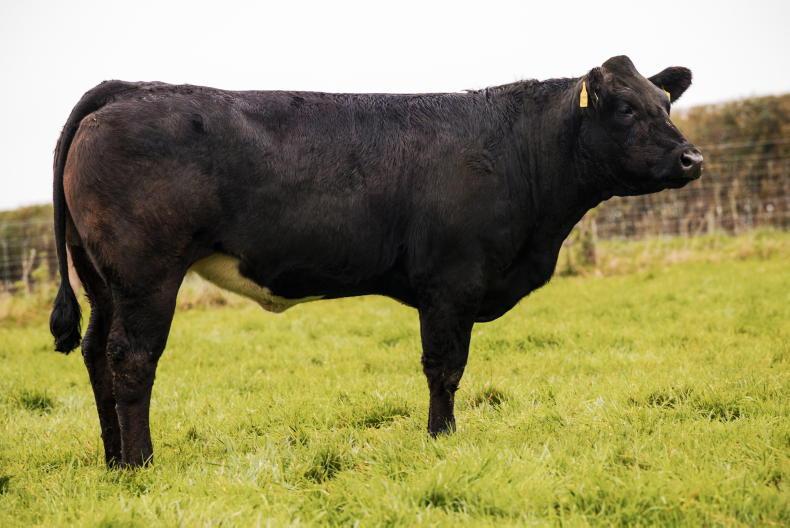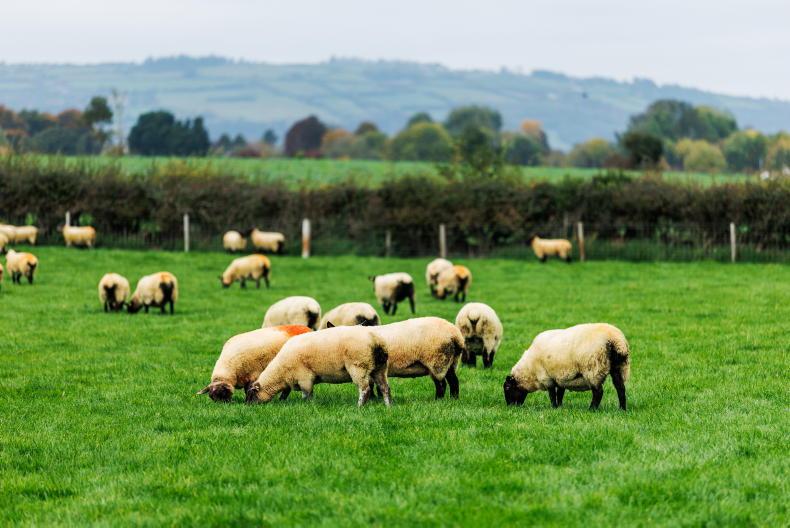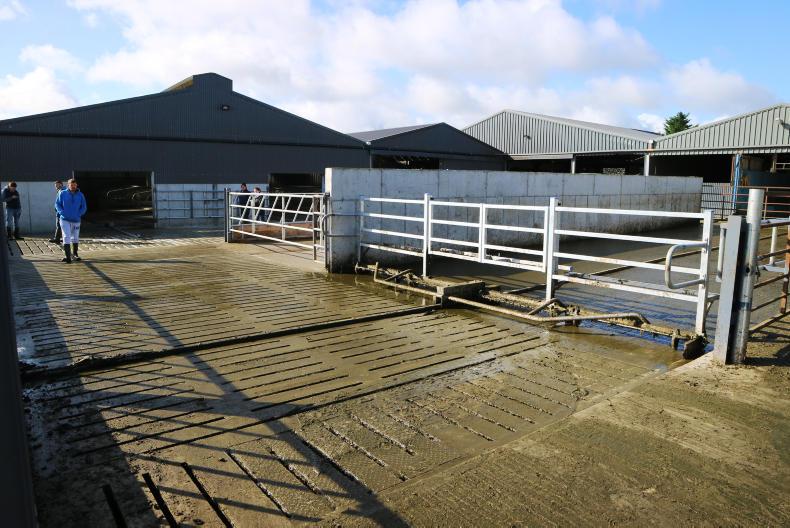The continued wet weather has seen ground conditions deteriorate over the past week, with cows having to be housed full-time on some programme farms.
Farms with heavier soils have been worst affected by the rain, with two farms in Co Tyrone and one farm in Co Cavan housing milking cows.
Dry cows have been housed on several farms and bought-in silage is being used by some to save better-quality silage for milking cows in the winter.
With plenty of grass on milking platforms, farmers are hopeful that weather will improve to get cows back to grass to keep on top of autumn grazing plans.
Farms that are not at the point of housing are taking other measures to limit damage, such as selecting drier paddocks for grazing, back-fencing cows to reduce walking on grazed ground and giving 12-hour breaks to get adequate clean-outs.
On-off grazing, where cows graze for a few hours each day, can be a way of getting grass into diets and limiting the need to feed silage or additional concentrates while reducing damage to ground.
Even on drier land where there is no risk of poaching, the continued wet weather means cows are unsettled, target residuals are difficult to achieve and production can be taking a hit.
Housing cows is the last resort on farms when ground conditions deteriorate. However, with daylight hours reducing and limited drying at this time of year, ground will take a long time to recover if poaching does occur.
Some chances that could be taken in the spring time, when both daylight hours and grass growth are increasing, cannot be taken now.
Dromore, Co Tyrone
Wet weather has meant that all milking cows have been housed day and night since last Thursday. There are currently 82 cows in the milking herd, including 21 stale cows.
Cows are being fed leftover silage from last year and concentrates are being fed to yield in the parlour, with this ranging from 3kg to 7kg/cow/day.
Body condition score will be monitored closely over the coming weeks, as this will have the biggest affect on fertility.
Short term
In the short term, we will start feeding some better-quality silage along with last year’s bales if we don’t get cows back out to grass in the next week.
Dry cows have been housed since the start of August to ease pressure on ground and they are being fed bought-in silage with dry cow minerals.
Cows are generally in good condition, but we are planning to condition score shortly, as there are a few thinner cows. These are generally older cows with lower EBIs.
Getting milking cows back to grass would allow heavier covers to be cleaned off, as full-time housing means some covers are becoming strong.
Grass growth is sitting at 49kgDM/ha/day and if cows don’t get out, we will have to take surplus grass out in bales at some point.
There are six empty cows in the milking herd that are earmarked for culling. However, we are continuing to milk them on the back of good milk prices.
With 24 homebred heifers, 14 bought-in heifers and eight bought-in cows calving down this autumn, around 10 cows will need to leave the herd to have the target of 160 cows milking this winter.
After the six empty cows, some late-calvers could be selected for culling, as nine are due to calve in January.
Ideally, we could sell in-calf or milking cows. However, this is dependent on getting a clear TB test in December.
Investing in disease prevention
Cows close to calving are moved from the cubicle house to a woodchip standoff pad beside the calf shed (see picture on left). Cows can then be moved directly into a calving pen if need be from small side doors in the shed which open on to the pad.
We are restricting dry cows from feeding during the day and allowing access to feed in the evening. This is to reduce the number of calvings during the night and it seems to be working well.
At drying off, cows get pour-on for roundworms and lungworms, a triclabendazole drench for fluke, pour-on for flies and a high-iodine mineral bolus. They are also treated with long-acting dry tubes and teat sealed.
Magnesium crystals are put in drinking water for cows around 10 days before calving to prevent milk fever.
All cows are vaccinated for salmonella, BVD and leptospirosis. Cows calving in December and January will be vaccinated for rotavirus to prevent an outbreak of scour towards the end of calving.
Herd health costs totalled £6,594 last year, which equated to £41 per livestock unit.
Vaccinations
Vaccines accounted for 18% of health costs and there are no changes planned to the vaccination programme this year.
We have an extensive vaccination programme because it is too risky to have the possibility of a disease outbreak with 73% of the herd due to calve in six weeks.
We see the benefit of investing in vaccinations having had issues with some diseases on the farm around 10 years ago.












SHARING OPTIONS